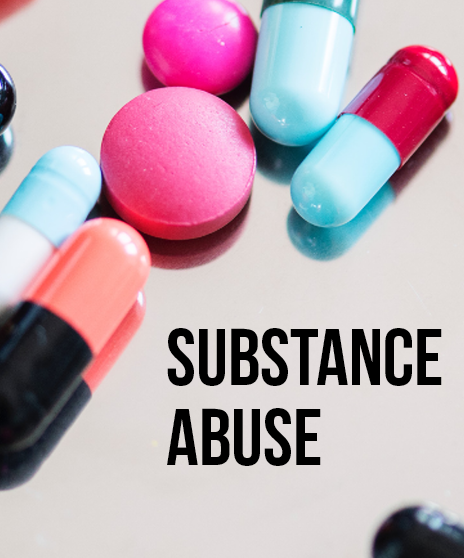[vc_row][vc_column][vc_column_text]By Hilary Long, PA-C
There is a good chance that you know someone that is struggling with substance abuse. In 2014, 21.5 million American adults battled a substance abuse disorder. Alcohol accounted for 80% of these with 7 million struggling with drug use. One in eight people struggle with alcohol and drug use combined. Almost 8 million American adults struggle with both a mental health disorder and substance abuse. It is estimated that addiction cost society $200 billion in 2007 with costs of healthcare, criminal justice, legal fees, lost workplace production/participation. Substance abuse is a growing epidemic with a global burden affecting 5.4% of the world population.
There is no clear understanding to how or why people become addicted to substances; However, once an addiction has been established, there are changes in the brain that make it incredibly hard to quit. Abusing drugs and/or alcohol before the brain is fully developed (any time before the mid 20’s) increases the prevalence of addiction later in life.
Research suggests that substance abuse is an emerging public health issue among the nation’s older population. The use of illicit drugs in those aged greater than 50 is projected to increase from 2.2% (2.8 million people) to 3.1% (5.7million people) between 2001 to 2020. The emergence comes in part from the relatively higher drug use rates of the baby boom generation compared with previous generations. An estimated 15% of elderly individuals may suffer from substance abuse, particularly with an increase in prescription drug abuse/dependence. The primary substance abuse disorder in those greater than 50 years old is Alcoholism; however, there is an increasing problem with abuse of opiates and benzodiazepines. 10% of people over the age of 65 are current every day smokers.
There are several signs that may indicate someone has a problem: Poor self-care, malnutrition, increasing medical illnesses, abrupt mood/attitude changes, irritability/aggression, lethargy/depression, changes in social network, and/or dramatic changes in priorities and habits. Diagnosis of addiction comes with: Continuing to use a substance despite negative consequences, recurrent use in physically hazardous situations, continued use despite recurrent/persistent social/interpersonal problems during use, repeated inability to carry out roles on account of use, tolerance/needing increased dose to achieve effect/diminished effect with the same amount, withdrawal syndrome or using to avoid withdrawal, using more substance or using for a longer period than intended, persistent desire to cut down or unsuccessful attempts to control use, spending a lot of time obtaining, using or recovering from use, stopping/reducing important occupational, social, or recreational activities due to use or craving or strong desire to use.
At risk drinking is defined for men as 15 or more drinks per week or 5 or more drinks per occasion. For women or anyone over the age of 65, that number is greater than 7 drinks per week or greater than 3 drinks per occasion. One standard drink is 12 oz of beer, 5 oz of wine or 1.5 oz of 80 proof liquor. As we age, we lose lean body mass and increase total body water which leads to higher blood concentration per amount consumed. Use of medications may increase risk of adverse reaction to consuming alcohol.
There are many treatment options for those dealing with substance abuse. A combination of multiple treatment methods and a positive support system have been shown to increase the likelihood that a person will be successful in their recovery. If you or someone you love is struggling, we encourage you to reach out to your medical provider.[/vc_column_text][/vc_column][/vc_row]


